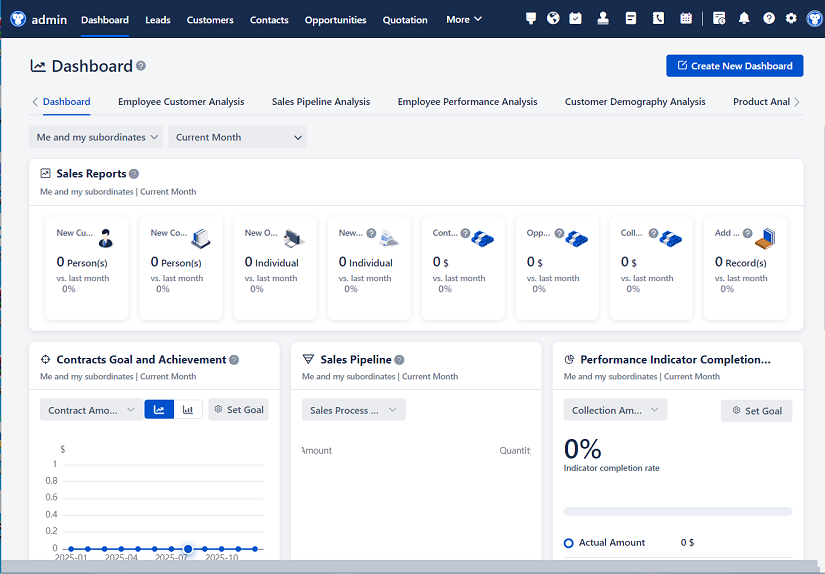
△Click on the top right corner to try Wukong CRM for free
Hey there! So, you're curious about CRM Data Structure Diagrams, huh? Well, let's dive right in. Imagine you've just started a new business, and you're all excited to get to know your customers better. You want to keep track of who they are, what they like, and how you can make them happy. That's where a Customer Relationship Management (CRM) system comes in, and at the heart of it is the data structure diagram.
Now, think of a CRM Data Structure Diagram as a map. But instead of showing you the way to the nearest coffee shop, it shows you how all the information about your customers is organized. It's like having a really detailed blueprint for your customer database. This diagram helps everyone on your team understand how different pieces of information relate to each other, making it easier to manage and use that data effectively.
So, why do we need this diagram, you ask? Well, imagine trying to build a house without any plans. It would be a mess, right? The same goes for managing customer data. Without a clear structure, you'd end up with a jumbled mess of information that no one can make sense of. The diagram helps you avoid that by laying out everything in a logical, easy-to-understand way.
Let's break it down a bit more. In a typical CRM Data Structure Diagram, you'll see a bunch of boxes and lines. Each box represents a different type of data, like "Customer," "Order," or "Product." The lines connecting these boxes show how the data is related. For example, a line might connect "Customer" to "Order" to show that a customer can place multiple orders. Simple, right?
But wait, there's more! These diagrams also help you identify the key attributes of each data type. For instance, under "Customer," you might have attributes like "Name," "Email," and "Phone Number." These attributes are like the building blocks of your data, and they help you capture all the important details about your customers.
Now, let's talk about the benefits. First off, having a well-structured CRM system means you can easily find and use the information you need. Whether you're looking to send out a marketing email or follow up on a support ticket, the data is right there, organized and ready to go. It's like having a super-organized filing cabinet in your brain!
Another big benefit is that it makes it easier to analyze your data. With everything neatly organized, you can run reports and get insights into your customers' behavior. Maybe you want to know which products are the most popular, or which customers are the most loyal. A good data structure diagram makes all of that possible.

And let's not forget about scalability. As your business grows, so does the amount of data you need to manage. A well-structured CRM system can handle that growth without breaking a sweat. It's like having a house that can expand as your family gets bigger—no need to move or start from scratch.

But, hey, I get it. Not everyone is a tech whiz, and creating a CRM Data Structure Diagram might sound a bit daunting. Don't worry, though! There are plenty of tools and resources out there to help you. Many CRM platforms come with built-in tools to create and manage these diagrams. And if you're feeling adventurous, you can even use specialized software like Lucidchart or Microsoft Visio to draw your own.
One thing to keep in mind is that your CRM Data Structure Diagram isn't set in stone. As your business evolves, so will your data needs. Maybe you'll start selling new products, or you'll want to track different types of customer interactions. The beauty of a well-structured CRM system is that it's flexible. You can add, remove, or modify elements as needed, keeping your data organized and up-to-date.
Now, let's talk about some best practices. First, always involve your team in the process. Your salespeople, marketers, and customer support folks all have valuable insights into what data is important and how it should be structured. By getting their input, you'll end up with a system that works for everyone.
Second, keep it simple. While it's tempting to include every little detail, a cluttered diagram can be more confusing than helpful. Focus on the key data points and relationships, and leave out the unnecessary stuff. Remember, the goal is to make it easy for everyone to understand and use the data.
Third, document everything. Make sure you have clear, detailed documentation of your data structure. This will be a lifesaver when you need to onboard new team members or make changes to the system. Think of it as leaving a trail of breadcrumbs for future you (or someone else) to follow.
Lastly, don't be afraid to seek help. If you're not sure where to start or how to proceed, consider consulting with a CRM expert. They can provide valuable guidance and help you avoid common pitfalls. Plus, they can often spot opportunities for improvement that you might miss.

Alright, so now you know the basics of CRM Data Structure Diagrams. But what about the nitty-gritty? Let's take a closer look at some of the key components you'll typically find in these diagrams.
First up, we have entities. An entity is basically a category of data, like "Customer" or "Order." Each entity has its own set of attributes, which are the specific pieces of information you want to capture. For example, the "Customer" entity might have attributes like "Name," "Email," and "Address."
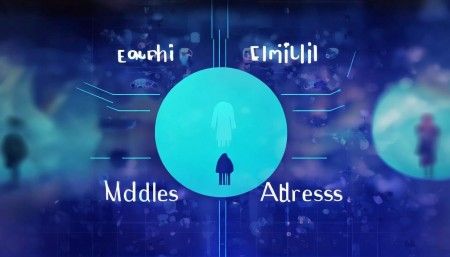
Next, we have relationships. These are the connections between entities. For example, a "Customer" can place multiple "Orders," and an "Order" can contain multiple "Products." These relationships are usually represented by lines connecting the entities, and they help you understand how the data is linked together.

Then there are keys. Keys are special attributes that uniquely identify each record in an entity. For example, a "Customer ID" is a key that ensures each customer is uniquely identified in the system. Keys are crucial for maintaining data integrity and avoiding duplicates.
Finally, we have constraints. Constraints are rules that govern how the data can be used. For example, you might have a constraint that says a "Customer" must have a valid "Email" address. These constraints help ensure that the data in your CRM system is accurate and consistent.
Now, let's talk about some real-world examples. Imagine you run an e-commerce store. Your CRM Data Structure Diagram might include entities like "Customer," "Order," "Product," and "Payment." The "Customer" entity would have attributes like "Name," "Email," and "Shipping Address." The "Order" entity would have attributes like "Order Date," "Total Amount," and "Status." And the "Product" entity would have attributes like "Name," "Price," and "Category."
The relationships between these entities would show that a "Customer" can place multiple "Orders," each "Order" can contain multiple "Products," and each "Order" is associated with a "Payment." This structure allows you to track everything from customer purchases to inventory levels, all in one organized system.
Or, let's say you run a service-based business, like a consulting firm. Your CRM Data Structure Diagram might include entities like "Client," "Project," "Invoice," and "Team Member." The "Client" entity would have attributes like "Company Name," "Contact Person," and "Industry." The "Project" entity would have attributes like "Start Date," "End Date," and "Budget." And the "Invoice" entity would have attributes like "Invoice Date," "Amount," and "Due Date."
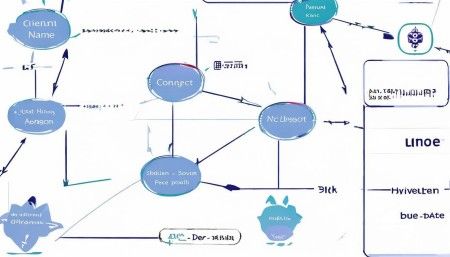
The relationships would show that a "Client" can have multiple "Projects," each "Project" can have multiple "Invoices," and each "Project" can involve multiple "Team Members." This structure helps you manage client relationships, track project progress, and handle billing, all in one place.
So, there you have it—a crash course in CRM Data Structure Diagrams. I hope this gives you a good starting point for organizing your customer data. Remember, the key is to keep it simple, involve your team, and stay flexible. And if you ever get stuck, don't hesitate to reach out for help.
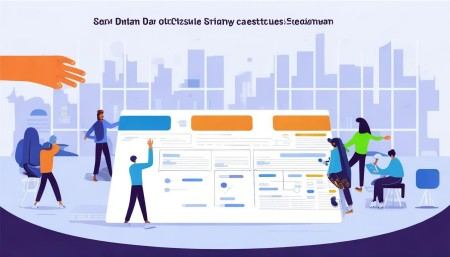
Now, let's wrap things up with a few questions and answers to help solidify what we've covered:
Q: What is a CRM Data Structure Diagram? A: It's a visual representation of how customer data is organized in a CRM system. It shows the different types of data, their attributes, and how they are related to each other.
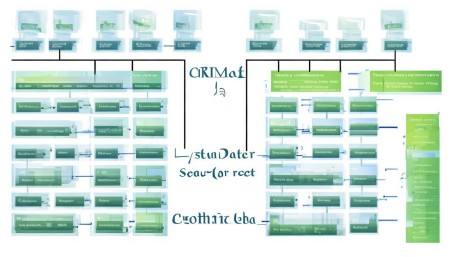
Q: Why is a CRM Data Structure Diagram important? A: It helps you organize and manage customer data effectively, making it easier to find and use the information you need. It also supports data analysis and scalability as your business grows.
Q: What are the key components of a CRM Data Structure Diagram? A: The key components include entities (categories of data), attributes (specific pieces of information), relationships (connections between entities), keys (unique identifiers), and constraints (rules governing data usage).
Q: How can I create a CRM Data Structure Diagram? A: You can use built-in tools in many CRM platforms, or specialized software like Lucidchart or Microsoft Visio. It's also a good idea to involve your team and document everything clearly.

Q: Can a CRM Data Structure Diagram change over time? A: Absolutely! As your business evolves, your data needs will change. A well-structured CRM system is flexible, allowing you to add, remove, or modify elements as needed.
I hope this helps, and good luck with your CRM journey!

Related links:
Free trial of CRM
Understand CRM system
AI CRM Systems
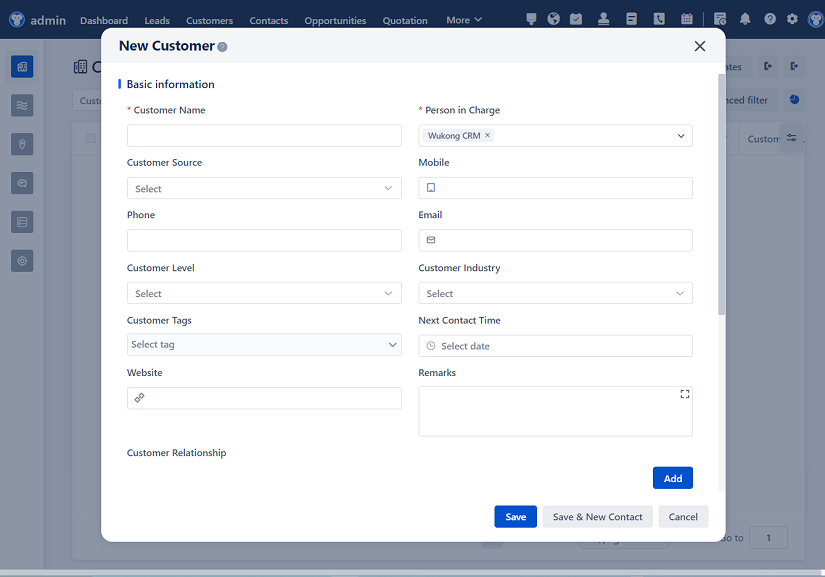
△Click on the top right corner to try Wukong CRM for free